
| Photos From Wyoming Tales and Trails (continued from preceding page)This page: Shoshoni continued, the decline of Shoshone, the end of mining at Copper Mountain, C. H. King Building. |
 |

| Photos From Wyoming Tales and Trails (continued from preceding page)This page: Shoshoni continued, the decline of Shoshone, the end of mining at Copper Mountain, C. H. King Building. |
 |
|
|
|
About This Site |
The opening will, as usual, attract a large number of people with high hopes of fine ranch lands, rich mineral claims and changes for husiness and speculation, and the demands for information regarding the resources and prospects has been unusually large. Gross exaggerations are rife and to the extent of agricultural lands and alleged rich mineral discoveries which will undoubtedly occasion much loss and disappointment to those who are misled by them. But by 1909, mining at Copper Mountain was essentially dead. by 1911 mining in Fremont County had essentially collapsed. In 1910 there was 504 tons of ore from Fremont County sold or treated from five mines, from which ore there was recovered $1,674 in gold, 169 fine ounces of silver, and 165 pounds of copper, with a total value for the three metals of $1,786, as compared with $2,456 in 1909 and with $5,583 in 1908. The reason for the decline was predictible. Development of Copper Mountain mining was dependent upon the completion of the Boysen Dam and Poer Company. As noted in Big Horn Power Co. v. State, 23 Wyo. 271, 148 Pac. 1110 (1915): At the southern entrance to this canon the Boysen claim has been located. The mountains both to the east and to the west of the Big Horn River promise great mineral development. Coal is expensive throughout this mining region and gasoline is almost prohibitive in price. Owing to the scarcity of water for boilers it is difficult in many places to use coal to advantage. The development of electric power seems to be the only solution of the problem now confronting the Copper Mountain and Owl Range miners. This should be borne in mind, because it is very questionable whether this mining district will ever develop properly unless cheap power for drilling and other mining operations and for transporting the ore to the nearest railroad point can be obtained. Asmus Boysen in planing the dam project failed to see that in the construction of the dam he would be innudated with a plethora of lawsuits. The dam was initially put into operation in 1909, but electricty was not produced until 1913. The lawsuits were sill going as late as 1930, five years after the dam had silted up and the power plant was taken out of service. For a history of the dam litigation, see Clarke v. Boysen, 39 F. 2d 800 (10th Cir. 1930); Annual Report U. S. Power Commission, 1922, p.108. Periodically hope would spring as to mineral development at Copper Mountain. In 1927, hope arose when Casper investors purchased the old Gold Nugget and McGraw claims. The most lasting of the mineral boomlets was the 1953 to 1971 uranium rush. Uranium mines were opened, but by 1971 they were closed.
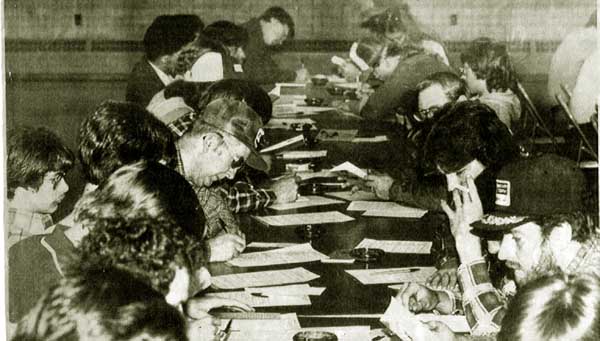 Unemployed Uranium Miners filling out unemployment applications at Riverton Eagles' Lodge
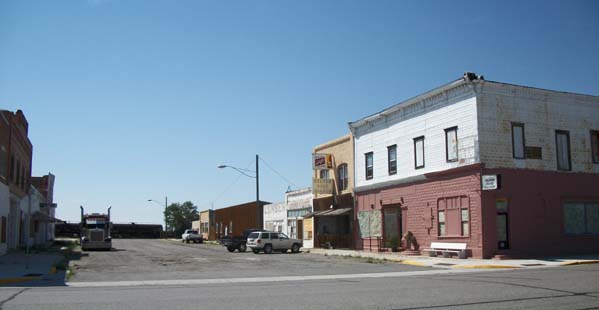 C. H. King Building, 2013. Photo by Geoff Dobson.
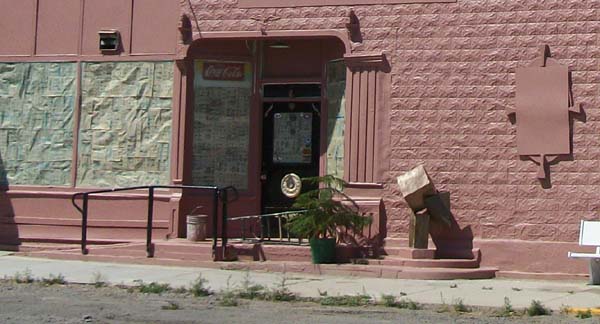 Entrance to the C. H. King Building showing sheetmetal pilaster separating the former mercantil from the bank, 2013. Photo by Geoff Dobson.
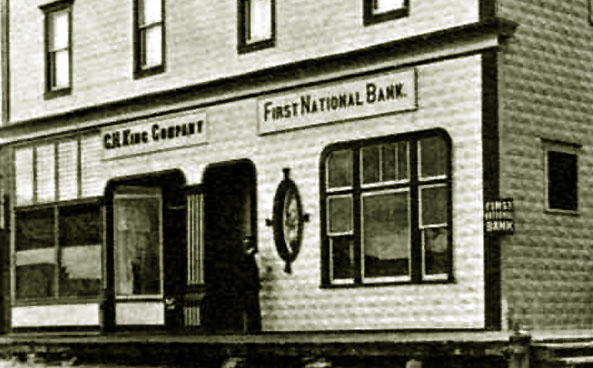 Entrances to C. H. King Building, approx. 1910..
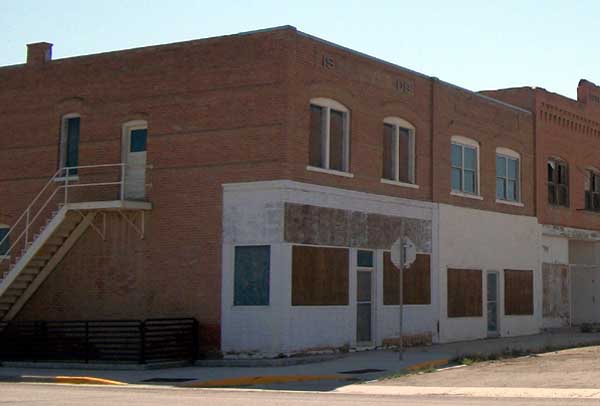 Shawver Hotel, 2013. Photo by Geoff Dobson.
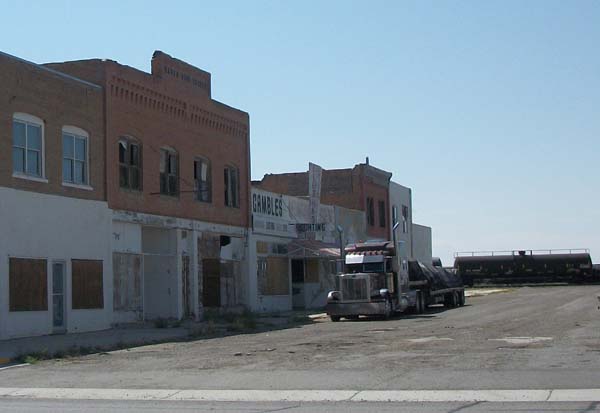 Heyer-Berger Building, 2013. Photo by Geoff Dobson.
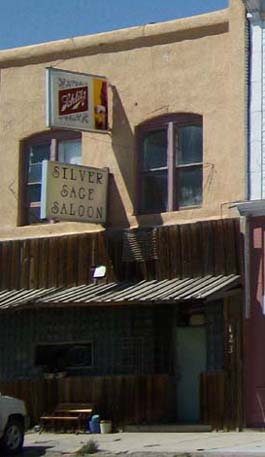 . . . . . .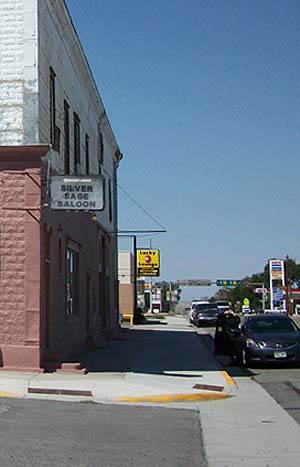 Left, Silver Sage Saloon; right directional signs for Silver Sage and Lucky 5 Lounge. Photos by Geoff Dobson, 2013. Next Page: Riverton
|

